
© Dave Morgan, courtesy the Royal Opera House. (Click image for larger version)
Royal Ballet
The Winter’s Tale
★★★★✰
London, Royal Opera House
12 April 2016
Gallery of first cast pictures by Dave Morgan (2014)
Gallery of second cast pictures by Dave Morgan (2016)
www.roh.org.uk
Like Shakespeare’s play, Christopher Wheeldon’s The Winter’s Tale takes place in two disparate kingdoms, an ocean and sixteen years apart. There’s a clear distinction in design, music and dance styles between wintery Sicilia and summery Bohemia. Then, in the last act, the two worlds come together in a magical, compassionate conclusion.
In between, the pacing of the plot goes through phases of extreme compression to protracted scene-setting. Sometimes the problem is Shakespeare’s scenario, at others the need for the corps de ballet to be kept busy. Joby Talbot’s commissioned score assists the story-telling almost too helpfully, providing motifs for the principal characters and their social contexts, while alerting the audience to what we should be feeling at any point. In spite of the bumpy journey, we end up caring about the fates of the characters – even the minor ones that Shakespeare killed off so cruelly (‘Exit pursued by a bear’).

© Dave Morgan, courtesy the Royal Opera House. (Click image for larger version)
The first act starts with a swift, expressionist prologue in which two little princes are crowned, their fathers’ corpses behind them. In no time, the boys have grown up to be King Leontes of Sicilia and King Polixenes of Bohemia. Leontes marries Hermione, has a son, and everybody is happy apart from a background chorus of witnesses who may know better. They give way to courtiers in wintery garments dancing a roisterous folksy routine. Unwisely, Hermione, heavily pregnant for a second time, joins in enthusiastically.
Wheeldon (like the Sicilian courtiers) evidently has no idea how a nine-months pregnant woman should be treated. A prosthetic bump looks ludicrous when it wearer is flung around in mid-air between revellers. Suddenly suspicious of Polixenes’ friendship with Hermione, Leontes is consumed by the spider of rage and jealousy.

© Dave Morgan, courtesy the Royal Opera House. (Click image for larger version)
At first, only the audience is aware of his paranoia. The court freezes as Leontes (Edward Watson) takes time out for the equivalent of a soliloquy. We see too explicitly what he imagines: white marble statues revolve to reveal sexual couplings as he hallucinates to overwrought music. Eventually, the court realises that something is amiss when their king starts physically abusing his wife in front of the young heir.
Watson is such a graphic dance-actor that he doesn’t need the aid of crudely erotic statuary to account for his frenzy. He curls himself in spasms of jealousy then arches into high-flying leaps before attacking Polixenes and Hermione. By now a crazed tyrant, Leontes has his maligned queen imprisoned and rejects the child she bears.

© Johan Persson, ©ROH 2014. (Click image for larger version)
When Hermione (Lauren Cuthbertson) confronts him after her trial for adultery, Wheeldon gives her a poignant solo in choreography that lacks psychological insight and physical plausibility. There is no indication that she has recently given birth or that she aches to cradle her missing baby. Instead, she spins wistfully in arabesque, rising repeatedly on pointe as her signature step.
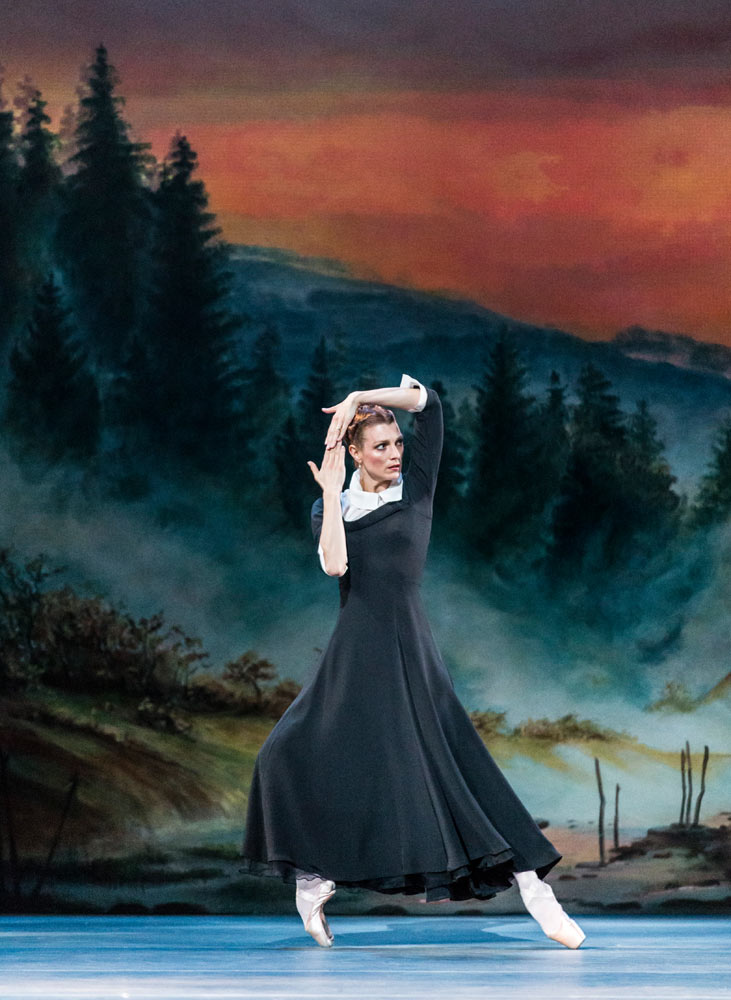
© Johan Persson, ROH. (Click image for larger version)
Wheeldon’s writing for Paulina (Zenaida Yanowsky), the head of the queen’s household, is far more convincing. She becomes an avenging angel, arms spread like wings, as she defends Hermione and reproaches Leontes, beating him up. Her distress is palpable in the sweep of her long legs and the anxious knitting of her feet in the Fred step – a nod to Frederick Ashton. She will be the conscience of the king once he comes to his senses.
When the action shifts in Act II to Bohemia, Polixenes’ kingdom, the choreographic style changes dramatically. Footwork is fast and intricate, balletic lifts quirky, folk dances earthier than those for Leontes’ courtiers. Bob Crowley has supplied a fantastical tree of life for the set, hung with celebratory ornaments. In the trunk is a door behind which Prince Florizel, posing as shepherd boy, can hide his coat before he courts Perdita.
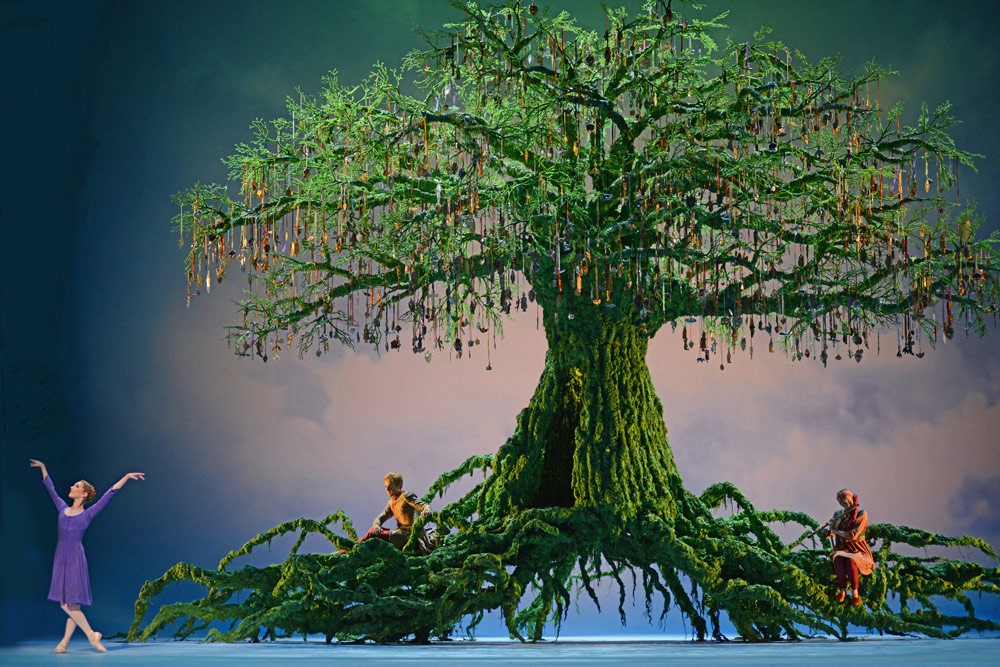
© Dave Morgan, courtesy the Royal Opera House. (Click image for larger version)
It’s not the only echo of Giselle Act I. Perdita, supposedly a peasant, is in love with an aristocrat, so marriage ought to be out of the question. Surrounded by her merry-making friends, she is going to be crowned Queen of the May. There’s even a Peasant pas de deux for her ‘brother’ and his girlfriend. However, when Florizel’s philandering is discovered by his father, Perdita doesn’t feel betrayed: she knew all along who Florizel was, and elopes with him to Sicilia, pursued by Polixenes.
The plot has largely come to a halt in Wheeldon’s Act II, leaving plenty of time for dancing. The springtime festivities are delightful, with lots for the corps to do. Solos for Perdita and Florizel are charming but hardly revelatory: she (Sarah Lamb) is finer than her friends; he (Steven McRae) is boyishly ebullient. Though their duets together show them dizzyingly in love, they spend more time apart than together, constantly turning away in circles. Talbot’s folk-inspired music, played by a versatile band of four on stage as well as by the orchestra, is charged with vitality. He does, however, underline the comic bits as heavily as an old-fashioned film score.
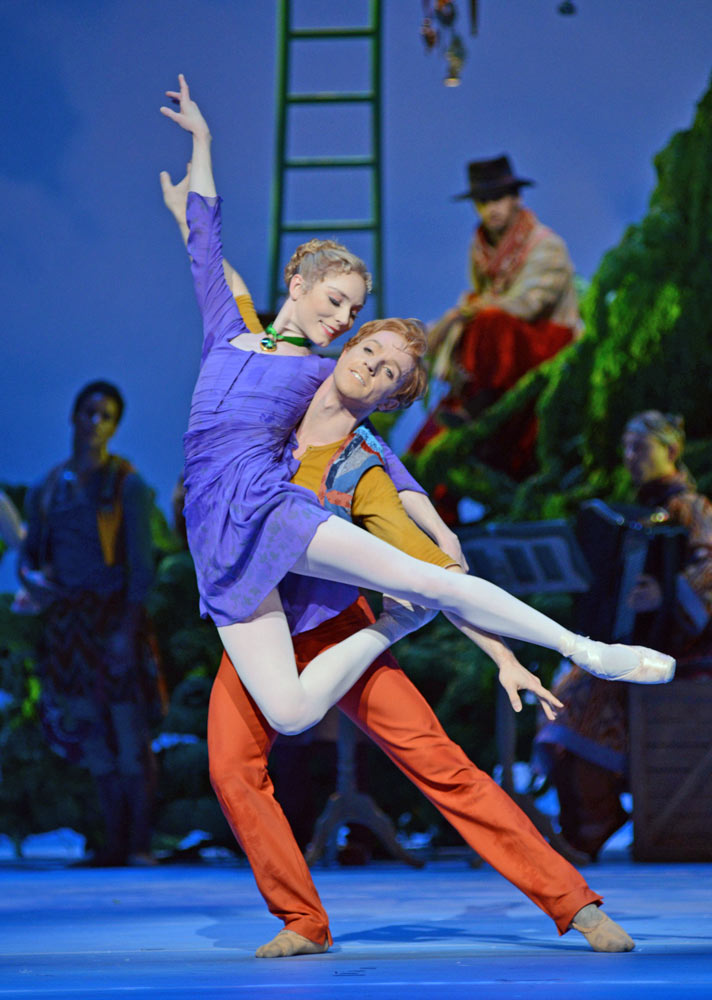
© Dave Morgan, courtesy the Royal Opera House. (Click image for larger version)
Once back in Sicilia for Act III and Shakespeare’s tricky ending, the mood changes completely. Wheeldon and his collaborators have found their own resolution for action that is reported, not shown, in the play. The recognition that Perdita is Leontes’ lost daughter does not take long, for he will lose her again to Bohemia, once she is happily married. He has little time for Polixenes, almost as deluded as he once was. Leontes’ concern is the discovery that Hermione is not dead, nor indeed a life-like statue, but a living, dancing woman.
Paulina, now his guardian angel, has brought him to understand the damage he has done. He approaches Hermione as though he cannot bear to face her. Both their reactions ring true as they begin to rebuild their marital relationship – a rare pas de deux in ballet terms. Cuthbertson is warmly compassionate, her signature spins in arabesque now pulsing with forgiveness. Watson dares to hope that he can partner her lovingly once again. Wheeldon fully understands his characters at last – as he does Paulina. In Yanowsky’s interpretation, she (like Judi Dench in Kenneth Branagh’s recent production of The Winter’s Tale) is the most important figure in the strange story.

© Dave Morgan, courtesy the Royal Opera House. (Click image for larger version)
The ballet’s ending, on a dying fall, is unusual. In place of happy celebrations (or, as Shakespeare does, marrying off Paulina to tie up a loose end), Leontes is left contemplating a statue of the son who died in Act I. There has been lasting loss as well as gain. Any inconsistencies in the ballet can be forgiven because its culmination is so right. Wheeldon has succeeded in turning an often intractable play into an emotionally moving ballet.













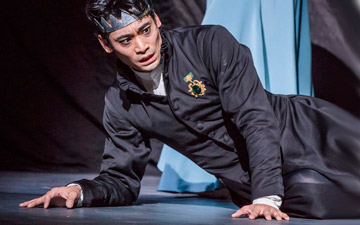
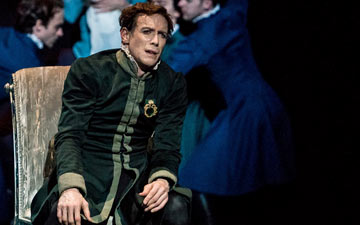


You must be logged in to post a comment.